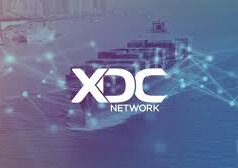Choosing a blockchain platform? If you’re torn between Tezos and Tron, this post breaks down how each appeals differently to developers—especially when it comes to governance, smart contract languages, performance, and ecosystem dynamics.
1. Genesis & Governance Philosophy
Tezos: Democracy in the Protocol
Tezos is all about continuous evolution through on-chain governance. Token holders—known as “bakers”—can propose and vote on protocol upgrades without needing forks. This self-amendment model has allowed Tezos to roll out 14 major upgrades seamlessly, avoiding disruptive community splits.(Tokenova, rapidinnovation.webflow.io, Wikipedia) The focus on formal verification (Michelson, Albert, Mi-Cho-Coq) further boosts security and protocol correctness.(Tokenova, arXiv)
A Redditor shared:
“There is no CEO… power is distributed… within the Tezos Foundation… power is not concentrated around just a few individuals.”(Reddit)
Tron: Fast, Media-Friendly Governance
Built with a vision of decentralizing the internet, Tron uses a Delegated Proof-of-Stake (DPoS) model. TRX holders vote for 27 Super Representatives (SRs) who validate blocks and govern the protocol. Unlike typical stake-weighted voting, each SR has equal voting power—roughly 3.7%—to promote fairness.(CoinDesk, Transak)
This model fosters scalability and engagement but has been criticized for centralized control potential. Still, Tron claims its SR election every six hours keeps governance fresh and decentralized.(CoinDesk)
2. Smart Contracts & Developer Tooling
Tezos: Verified by Design
Smart contracts on Tezos are written in Michelson, a functional, stack-based language designed for formal verification. Developers can mathematically prove their contract’s correctness using tools like Mi-Cho-Coq and Albert, making Tezos ideal for high-stakes, error-resistant applications.(arXiv, BestDapps)
However, Michelson’s learning curve is steep—potentially limiting for developers unfamiliar with formal methods.
Tron: Familiar and Frictionless
Tron offers smooth onboarding for developers through its Tron Virtual Machine (TVM), which is EVM-compatible and supports Solidity. Tools like TronBox, TronGrid, and TronStudio, plus an integrated debugger, make development comfortable and familiar.(Transak)
This eases migration from Ethereum and accelerates dApp deployment—but may lack the formal rigor found in Tezos.
3. Performance & Scalability Snapshot
| Feature | Tezos | Tron |
|---|---|---|
| Consensus | Liquid PoS (LPoS) | Delegated PoS (DPoS) |
| Governance | On-chain, self-amending | 27 SRs elected every 6 hours |
| Smart Contracts | Michelson (formally verifiable) | Solidity on TRON Virtual Machine (EVM-like) |
| TPS Real (est.) | Data unavailable | ~120 TPS typical, up to ~2,500 theoretical(Chainspect) |
| Block Time | ~10 seconds | ~3 seconds(Wikipedia, Chainspect) |
| Energy Efficiency | Very low carbon footprint(Wikipedia) | Efficient but less emphasized |
| Ecosystem Focus | Institutional DeFi, NFTs, art | Entertainment, DeFi, content, mass adoption |
4. Ecosystem & Use Cases
Tezos: Quality, Stability, Cultural Depth
Tezos cultivates a developer ecosystem focused on security, governance, and formal systems. It’s attracting institutional and creative use cases:
- Musée d’Orsay digital collectibles
- BattleRise gaming SDK
- Enterprise finance and DeFi integration with Splint Invest and NOWPayments(JuCoin)
The platform’s emphasis on long-term sustainability and correctness makes it suitable for enterprise-grade dApps and cultural projects.
Tron: Speed, Entertainment, Massive Scale
With its DPoS structure and EVM-like tooling, Tron is built for speed, low costs, and mass accessibility—especially in entertainment, gaming, and DeFi.
It offers fast transactions, cheap fees, and familiar developer environments. However, Tron has faced criticisms:
- Legal issues and reputation involving founder Justin Sun and SEC scrutiny.(Wikipedia)
- Criminal activity concerns, including claims that over half of all illicit crypto activity passed through Tron in 2024.(Wikipedia)
Developers sensitive to reputation or regulatory risks may weigh these heavily.
5. Developer Appeal: Who Should Choose What?
Choose Tezos if you value:
- Long-term platform stability via on-chain upgrades and formal governance
- High-security, formally verified smart contracts
- Cultural and institutional partnerships in art, finance, and regulated domains
Choose Tron if you’re after:
- Fast, high-throughput transaction capabilities and low costs
- Smooth Ethereum migration with Solidity tooling and familiar infrastructure
- Consumer-oriented apps—especially entertainment or high-volume use cases
Pragmatism vs. Precision
Tezos aims for stability, correctness, and durable evolution through self-amendment and formal methods. It’s the blockchain if you’re building for precision, regulation, or long-term resilience.
Tron, by contrast, opts for speed, scale, and convenience, with developer tools that mimic Ethereum and target mass adoption. It suits apps where transaction volume and low latency matter most—even if that comes with controversy.
At the end of the day, your platform choice depends on your project’s priorities—whether that’s security and governance or scalability and speed.
Sources
- Tezos governance, formal verification, ecosystem: (Tokenova, rapidinnovation.webflow.io, Wikipedia, arXiv, JuCoin, Reddit)
- Tron architecture, tooling, performance, decentralization: (CoinDesk, Transak, totalbitcoin.org, medium.com, hacken.io, blockapp.dev, Wikipedia)
- Performance metrics comparison: (Chainspect)
- Tezos energy efficiency: (Wikipedia)
Let me know if you’d like any tweaks—perhaps deeper dives into tooling, dev community vibes, or real-world testimonials!



























